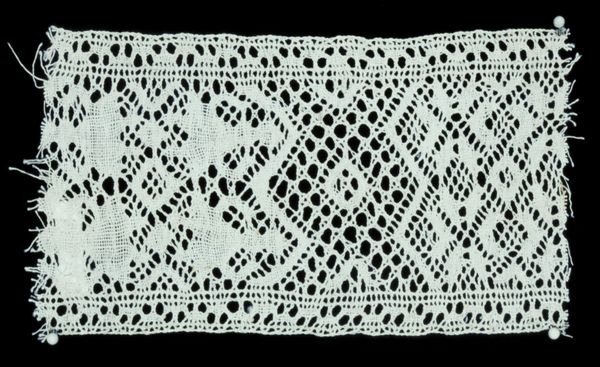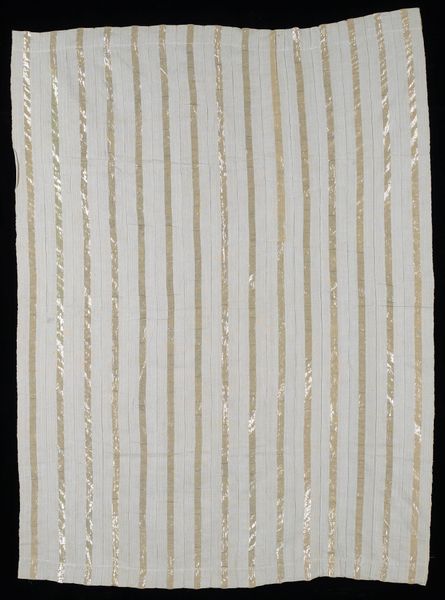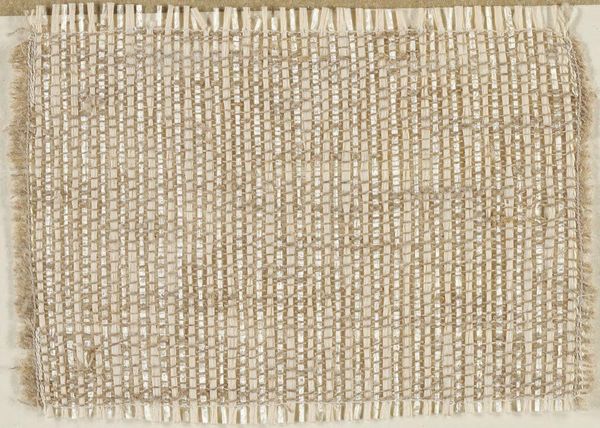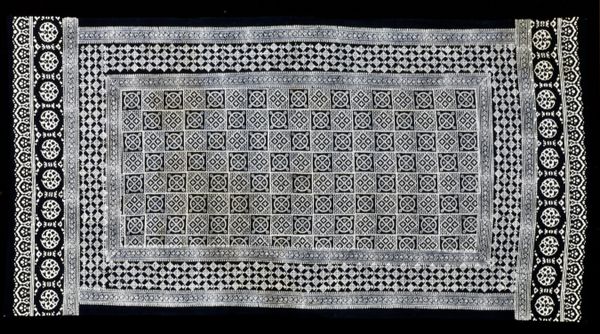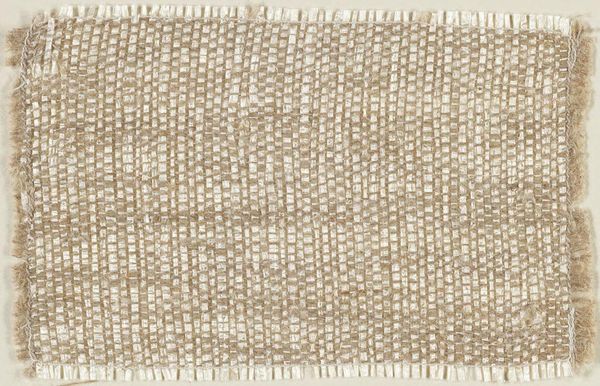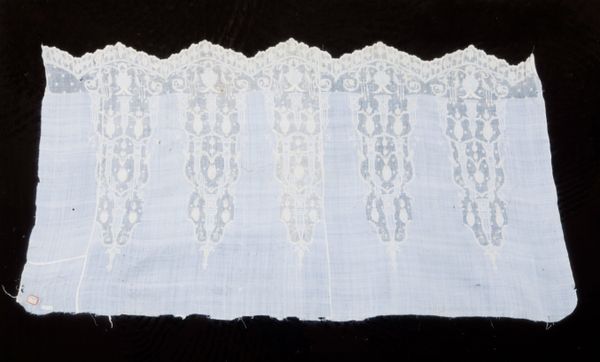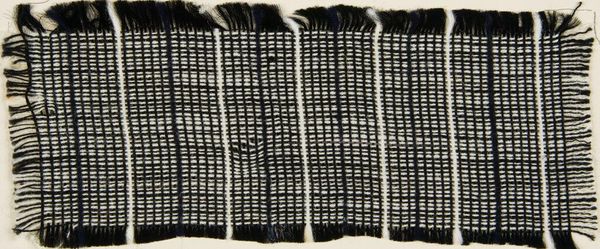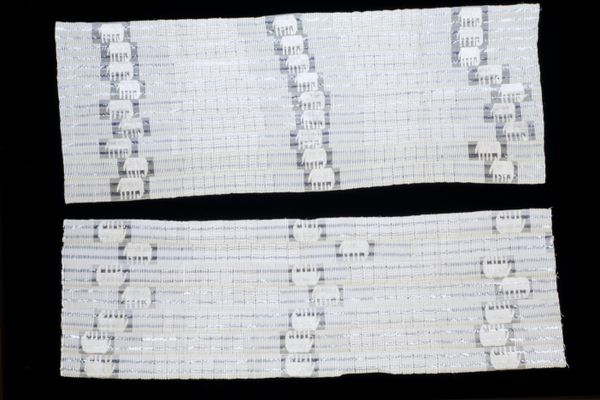
fibre-art, weaving, textile
#
fibre-art
#
weaving
#
textile
#
geometric pattern
#
geometric
#
decorative-art
Copyright: Public Domain
Curator: Here we have "Passementerie," a fibre-art piece whose maker and date of creation remain unknown, though we’re fortunate to have it here at the Minneapolis Institute of Art. Editor: It looks like a cloud crying yarn! So simple, almost severe in its directness, and yet there’s a real beauty in the texture, in the starkness. Curator: Exactly! Its strength is truly in its elegant geometry, meticulously crafted from what appears to be cotton or linen. This detailed textile work involves weaving, producing a decorative and intricate network above a fringe. You know, something about the nature of weaving-- its repetitive handwork-- resonates so profoundly. It's as if the creator imprinted some small part of themselves into it. Editor: Weaving takes time, so that means investing not only skill but human hours into making it... and considering that passementerie describes elaborate trimmings, often adorning garments and furniture, it raises questions about labor. What kind of hands created it? Was it a specialized craftsperson or someone whose work often went unseen and uncredited? Curator: That’s a vital observation. Textiles often blur boundaries, sitting between "art" and "craft". Its intended purpose certainly played a part. It probably lived within the private, domestic sphere where decoration dictated that every element perform and contribute toward beautification. Though now it exists on the walls of the museum. Funny isn't it? Editor: Absolutely. Passementerie served as ornament, a delicate addendum. To consider it as a symbol of labor, craft production, and economic exchange redirects our vision beyond beauty. The history of its making reveals systems of creating that often marginalize specific voices or materials. The beauty is just one strand in a complex weave. Curator: And maybe, when you really see this weaving—the knots and ties, the careful ordering—you're also looking at how something fragile gains strength through structure, something made to be almost ethereal gets anchored by human dedication and sweat. Editor: Indeed. Next time you are using any everyday textile at home—just think about that and what kind of a story might have made its threads.
Comments
No comments
Be the first to comment and join the conversation on the ultimate creative platform.

